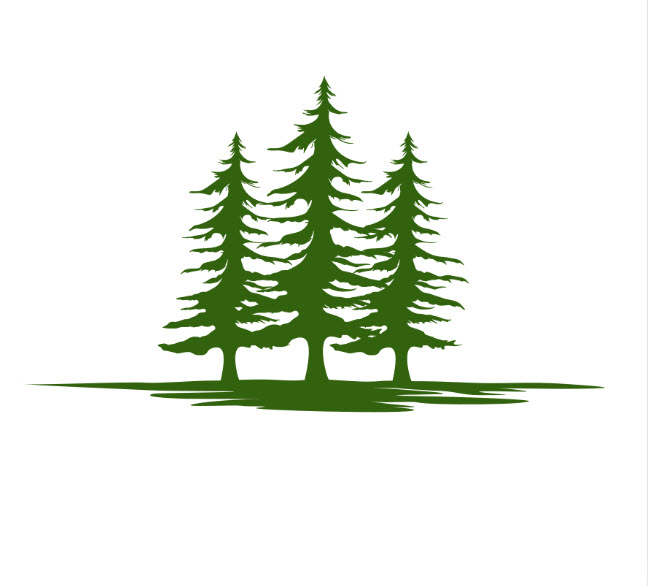Residential and Commercial
Trees are integral to both residential and commercial landscapes, offering shade, enhancing aesthetics, and contributing to the environment. However, maintaining these trees requires specialized care, which is where professional tree services come in. Whether for homes or businesses, tree services are crucial for ensuring the health, safety, and beauty of trees. This comprehensive guide explores the various aspects of tree services, including residential and commercial tree care and removal.
Residential Tree Services
Essential Maintenance and Care
Residential tree services focus on maintaining the trees around homes to ensure they remain healthy, safe, and visually appealing. Regular maintenance tasks like pruning, trimming, and fertilization are central to this effort. Pruning involves removing dead or overgrown branches to encourage healthy growth and prevent potential hazards. Trimming helps in shaping the tree and controlling its size, preventing it from encroaching on structures or power lines.
Fertilization provides trees with the necessary nutrients to thrive, especially in urban areas where soil quality may be compromised. These maintenance practices not only enhance the tree’s appearance but also increase its lifespan by preventing diseases and promoting strong, healthy growth.
Tree Health Inspections
Health inspections are a key component of residential tree services, involving a detailed examination of the tree’s condition by a certified arborist. These inspections aim to identify signs of disease, pest infestations, or structural weaknesses early on. Early detection allows for prompt treatment, which can often save a tree that might otherwise deteriorate.
For example, trees affected by specific fungal diseases or pests can be treated more effectively if the problem is caught in its early stages. Additionally, structural issues such as weak limbs or splits in the trunk can be addressed with techniques like cabling or bracing, which help support the tree and reduce the risk of collapse. Regular health inspections provide homeowners with a proactive approach to tree care, ensuring their trees remain healthy and safe.
Emergency Tree Services
Unexpected events such as storms, heavy winds, or ice accumulation can cause significant damage to trees, sometimes leading to emergencies that require immediate attention. Emergency tree services are essential for handling situations where trees or branches have fallen, blocking access or posing a danger to the property or people.
In such scenarios, professional arborists respond quickly to remove the fallen debris and assess the extent of the damage. They also take steps to prevent further risks, such as stabilizing trees that are at risk of falling or removing branches that have become hazardous. These emergency services are crucial for protecting property and ensuring the safety of residents.
Residential Tree Removal
While tree care typically focuses on preservation, there are circumstances where removal is necessary. Residential tree removal becomes essential when a tree is dead, diseased beyond recovery, or poses a significant threat to the property or its inhabitants. For instance, a tree that is leaning dangerously towards a house, has extensive deadwood, or is heavily infested with pests may need to be removed.
Tree removal in residential areas requires careful planning to ensure safety and minimize damage to surrounding structures or landscapes. Arborists use specialized tools and techniques to carefully dismantle and remove trees, often taking them down in sections to avoid harming the property. In many cases, the removal process also involves stump grinding to prevent regrowth and maintain the yard’s appearance.
Commercial Tree Services
Managing Large-Scale Landscapes
Commercial tree services are designed to meet the needs of businesses, property managers, and municipalities, where the scale of tree management is often much larger than in residential settings. These services include routine maintenance such as pruning, trimming, and health assessments, tailored to manage large numbers of trees across expansive areas like parks, campuses, and corporate grounds.
Managing these landscapes requires not only regular upkeep but also strategic planning to ensure that tree care activities do not disrupt business operations. For instance, pruning or tree removal might be scheduled during non-peak hours to minimize impact on employees and customers. This approach ensures that commercial properties maintain their aesthetic appeal and comply with safety standards without hindering daily operations.
Regulatory Compliance
In commercial settings, tree care often involves navigating a complex web of local regulations and ordinances that govern tree preservation, removal, and replacement. These regulations may dictate the number of trees that must be maintained on a property, the species that should be planted, and the processes for legally removing trees.
Professional tree services are knowledgeable about these regulations and help businesses ensure compliance. This might involve obtaining the necessary permits for tree removal, adhering to local guidelines for tree replacement, or selecting species that are best suited to the local climate and soil conditions. Compliance is crucial for avoiding penalties and maintaining the property’s value and reputation.
Health Management and Risk Mitigation
Commercial properties often contain a large number of trees, each requiring regular monitoring to ensure they remain healthy and do not pose a risk. Tree health management in these environments involves periodic inspections to detect issues like disease, pests, or structural instability. These inspections are followed by appropriate treatments to address any problems.
Risk mitigation is a particularly important aspect of commercial tree services. Trees on commercial properties can present significant liability risks if not properly managed. For example, a tree with a dead limb could fall and cause damage to vehicles, buildings, or injure people. By proactively managing tree health and addressing potential hazards, commercial tree services help businesses reduce the risk of costly accidents and legal liabilities.
Commercial Tree Removal
Commercial tree removal is often a more complex process than residential tree removal, due to the larger scale of commercial properties and the potential impact on business operations. Trees may need to be removed for various reasons, including clearing land for new construction, removing trees that are damaging infrastructure, or addressing safety concerns.
The removal process typically requires heavy machinery and a team of skilled workers to safely and efficiently remove large trees. The operation is carefully planned to minimize disruption to the business and surrounding areas. Additionally, tree removal in commercial settings often needs to be done in accordance with local regulations, including any requirements for replanting or environmental impact assessments.
Conclusion
Tree services are essential for maintaining the health, safety, and beauty of trees on both residential and commercial properties. These services range from routine maintenance and health inspections to emergency response and tree removal. Whether you are a homeowner looking to enhance your yard or a business needing to manage a large landscape, professional tree services provide the expertise and tools necessary to care for your trees effectively. By investing in these services, property owners can ensure that their trees remain valuable assets, contributing to the environment and enhancing the overall appeal of their property.

